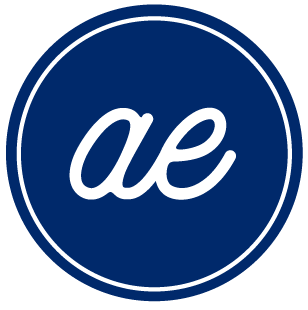Design System Process
Define the right thing to build. Build the thing right.
I created this documentation for the Design Systems team that I lead within CVS Health Digital from workshops I facilitated with the team, followed by an iterative review process so that everyone on the team was included in the process.
The Double Diamond design process is a widely known framework that inherits design thinking and fosters collaboration, creativity, innovation and consistency to a workflow. This approach helps break down large projects into manageable segments of work. Guidelines for each step to ensure concepts are properly defined, tested, and refined to meet users needs, fit within our system, and are consistent with our design system; and are consistent with our brand.
Design thinking asks us to identify and understand user problems to provide better, novel experiences from the bottom-up. With systems thinking we flip that perspective to understand how a potential design solution might affect the overall system based from the top-down.
The Digital Pulse UI Kit framework features two diamonds representing the problem, and the solution. The framework also includes five steps: Intake & Pre-discovery, Discovery, Define, Develop, and Deliver.
Before we enter the Double Diamond, we start with intake.
Intake
Plan & Prepare
Goal
Create a strong foundation and prepare for work to come. Ensure everyone involved in the project has a common understanding of the desired outcomes and the approach the team plans to take.
After this phase, the feature should be ready for the upcoming PI prioritization.
Common Activities
Exploratory research -user interviews, focus groups, field studies
Stakeholder interviews - data insights, review of previous solutions, key business objectives
Communication with the team to define and prioritize needs
Deliverables
Documentation of initial requirements for feature definition.
We need a good understanding of scope of work for the team to create stories
Define where this fits into overall PI priorities
Collection of examples to support the problem
We may say no to prioritizing a request, and will provide reasoning
Understanding the Problem
The first diamond is focused on the problem space and encompasses the discover and define steps. In this first phase, the goal is to research and explore the problem and user needs.
Discover
Research & Focus
Goal
The discovery phase involves researching the problem space, framing the problem, and gathering evidence. This phase does not involve testing hypotheses or solutions.
To be effective, discovery should be broad and agnostic to the solution or technology.
Understanding users: Through user research, the project team achieves an understanding of who the users are and how they are affected by a particular problem, as well as what they need, desire, and value from a solution (and why). It is important to include users with disabilities in the process.
Understanding both the problem and the opportunities: Through investigation, the team understands how and why the problem occurs, and what effect it has both users, and the organization. We uncover opportunities for the organization, product, or service. Once the problem statement is established, designers will reach out to Inclusive User Research team to find out if research exists for this topic or if a backlog item can be added for future research.
Shared vision: During discovery, the team works with stakeholders to understand business objectives and desired outcomes and align on what success looks like. The team should also have an idea of what success metrics will be tracked.
Common Activities
Exploratory research - user interviews, focus groups, field studies
Stakeholder interviews - data insights, review of previous solutions, key business objectives
Competitive / heuristic / gap analysis
Workshops - alignment, assumption mapping, affinity diagram mapping, service blueprint, problem framing
Demo prep for discovery presentation
Engineering spike for discovery: RFC, document, and user story creation
Deliverables
Discovery documentation for design, content, engineering
Technical analysis & implementation plan
Summarizing findings that may include the following:
High level concepts
User journey maps
User needs statements
Finalized problem statement
Internal & Industry examples collected
Define
Test & Refine
Goal
The definition phase refines initial assumptions based on the learnings from discovery.
We challenge our initial assumptions to pressure test the problem and proposed solutions, and adapt as necessary. Multiple ideas are analyzed and synthesized.
After definition, work will be ready for further refinement from user testing, pressure testing and team collaboration.
Common Activities
Preliminary design wireframes and coded proof of concepts are created.
Identify content needs and patterns
Storybook / test environment to validate design
Pressure testing of ideas
Initial draft requirements documentation
Initial user testing to support direction, including users with disabilities
Team review for awareness, alignment, and to uncover any challenges or necessary enhancements
Deliverables
Draft Requirements documentation
Draft designs
Draft coded components
Early user testing results
Draft accessibility annotations
Design the Right Solution
The second diamond is focused on ideating, prototyping, and testing to find a suitable solution. It includes the develop and deliver steps.
Develop
Iterate & Solve
Goal
During the deliver stage, the design, code and related documentation are completed and launched on the Pulse site. Important activities at this stage are final testing, approval, launch, and evaluation.
After deliver phase is concluded:
Monitor feedback and answer questions on new release
Communicate and demo published work
Gather any additional feedback or use cases for future updates or enhancements
Proactively gather feedback post release
Common Activities
Final testing and QA for both design and
development and accessibility release readiness
A11y engineering testing & certification
Technical feature documentation
Publish component in Figma
Code deployment
Publish documentation on Pulse site
Create and distribute release notes via email, Slack, and Pulse doc site
Prep for demo
Deliverables
Published design component / pattern -
with token annotations
Published coded component / pattern
Published documentation
Release communication distributed
Published annotation preset
Release demo

